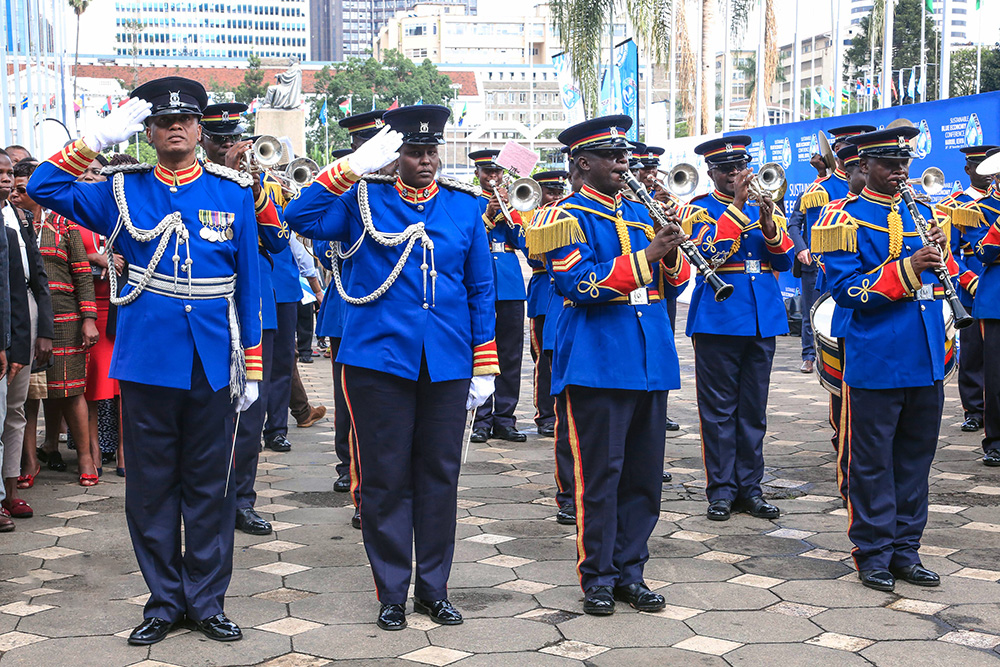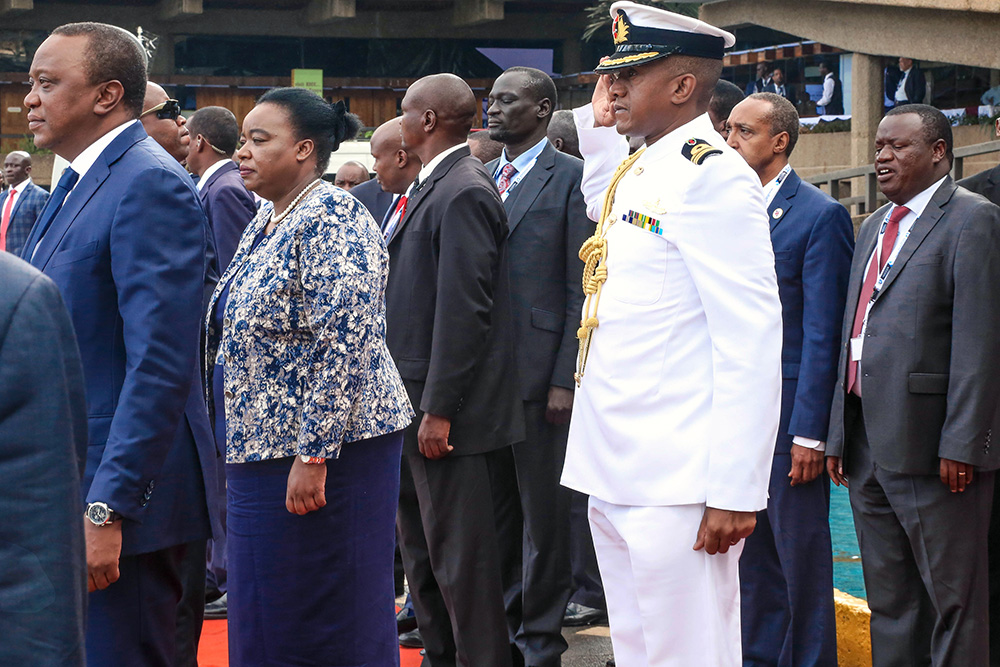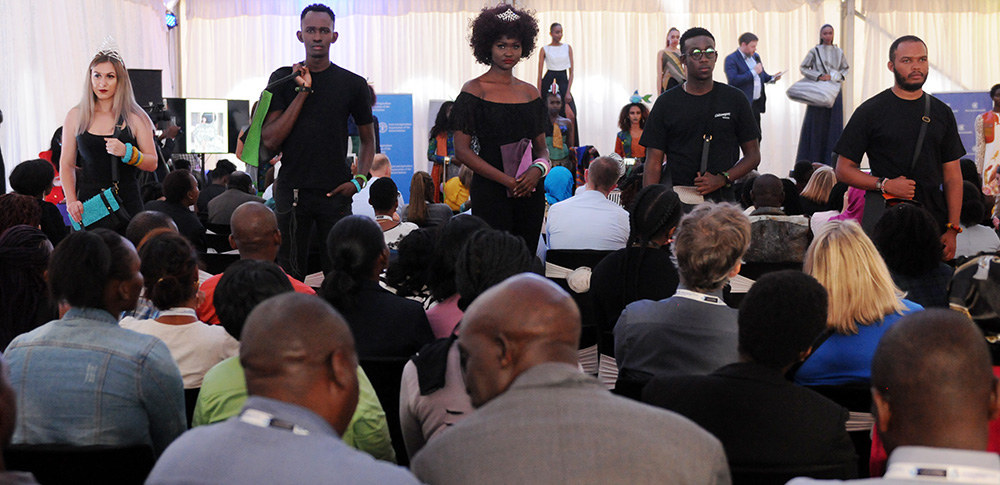Summary Highlights of the Conference
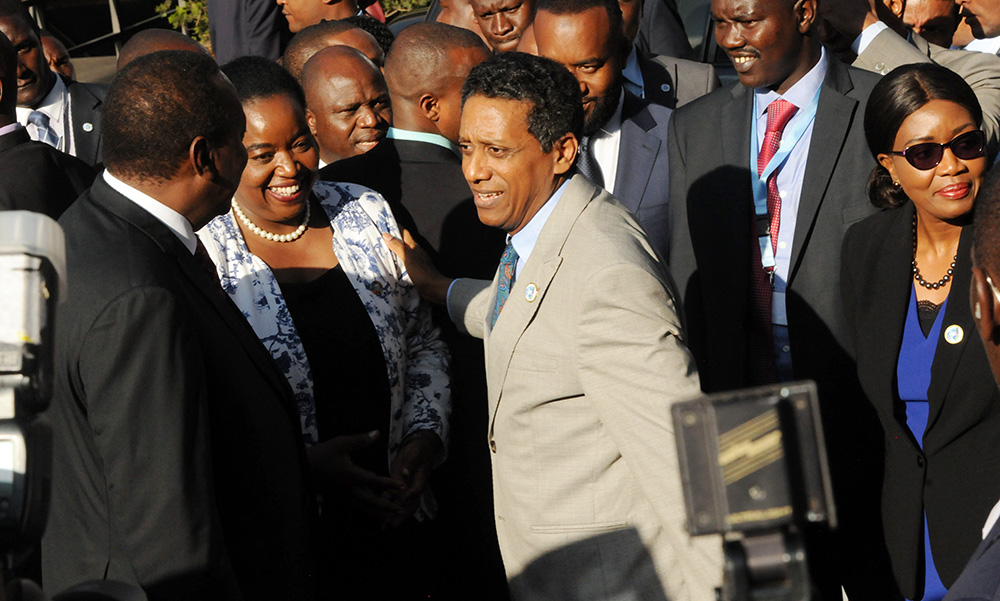
L-R: President Uhuru Kenyatta, Kenya; Monica Juma, Ministry of Foreign Affairs, Kenya; President Danny Faure, Seychelles; and Saara Kuugongelwa-Amadhila, Prime Minister of Namibia
The third day of the Sustainable Blue Economy Conference opened with a second session of Leaders’ Commitments. A series of side events were held throughout the morning. The side event on harnessing global action to tackle illegal, unreported and unregulated (IUU) fishing emphasized the importance of joint efforts in combating IUU fishing, considering it involved other crimes such as corruption, money laundering, and drug trafficking.
In the afternoon, all participants gathered for the Ministerial and Heads of Delegation Leaders Circle and heard a summary of the conference report. Presenting highlights from the Nairobi Statement of Intent, Jonathan Wilkinson, Minister of Fisheries, Oceans and the Canadian Coast Guard, said that implementing the commitments would require investments that translate into bold actions.
Leaders’ Commitments included pledges on:
- marine protection, €40 million to protect corals and reefs and €60 million for the protection of marine areas in African countries (EU);
- plastics and waste management, US$100 million earmarked for better oceans management and against dumping, and US$200 million over the next four years for the development of initiatives to combat marine litter and microplastics (Norway);
- maritime safety and security, €250 million for naval vessel replacement and the purchase of two marine patrol aircraft (Ireland);
- €40 million to support aquaculture value chains in African countries (ACP-EU);
- infrastructure, 600 projects leading to an investment of US$120 billion (India - Sagarmala Programme);
- biodiversity and climate change, a US$10 million investment in the Pacific Initiative for Biodiversity, Climate Change and Resilience together with the EU, New Zealand and Australia (Canada);
- technical assistance and capacity-building, US$20 million in increased technical assistance and capacity development in small-island developing States (Canada); and
- private sector support, US$150 million by the Government of Canada and the private sector to build a knowledge-based ocean economy (Canada).
In a discussion on the enablers of the Blue Economy, Jonathan Wilkinson, Minister of Fisheries, Oceans and the Canadian Coast Guard, Canada, identified leadership and political will as a fundamental prerequisite for finding technical solutions to end plastic pollution.
Uhuru Kenyatta, President of Kenya, stressed that the truly global representation and the far-reaching and collectively beneficial outcomes of the conference demonstrated the transformative power of multilateralism. The conference was declared closed at 4:53 pm.
IISD Reporting Services, through its ENB+ Meeting Coverage, provided daily web coverage from the Sustainable Blue Economy Conference. In addition, IISD Reporting Services has published a summary report of the Conference in HTML and PDF.
Photos by IISD/ENB | Diego Noguera
For photo reprint permissions, please follow instructions at our Attribution Regulations for Meeting Photo Usage Page
+ Visit the web coverage for Wednesday, 28 November 2018.
Leaders’ Commitment Segment
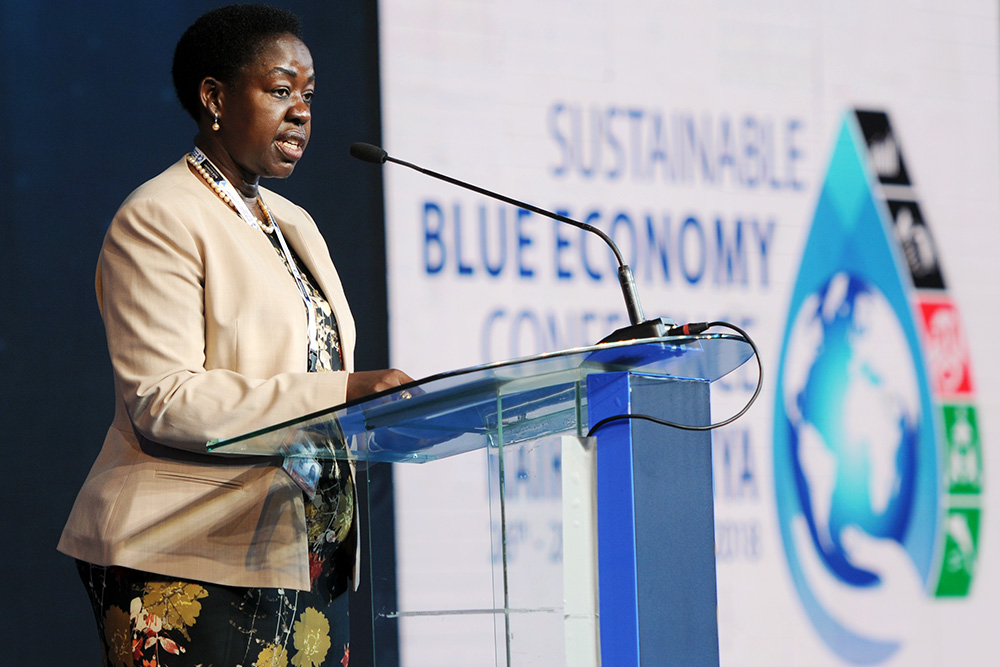
Jemma Nunu Kumba, Minister of Wildlife Conservation and Tourism, South Sudan
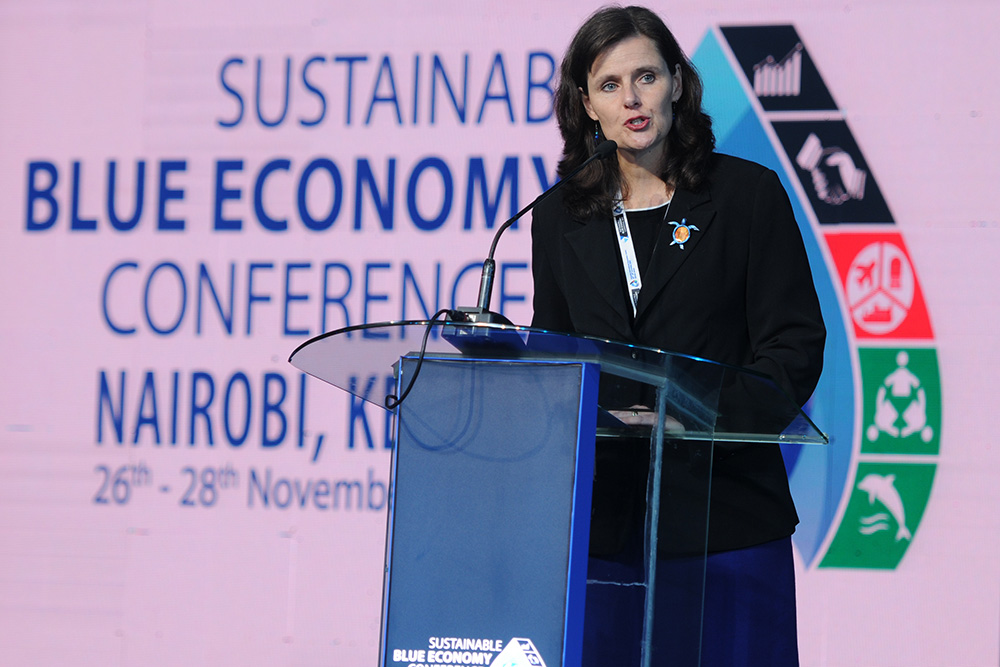
Alison Chartress, High Commissioner of the Commonwealth of Australia to Kenya
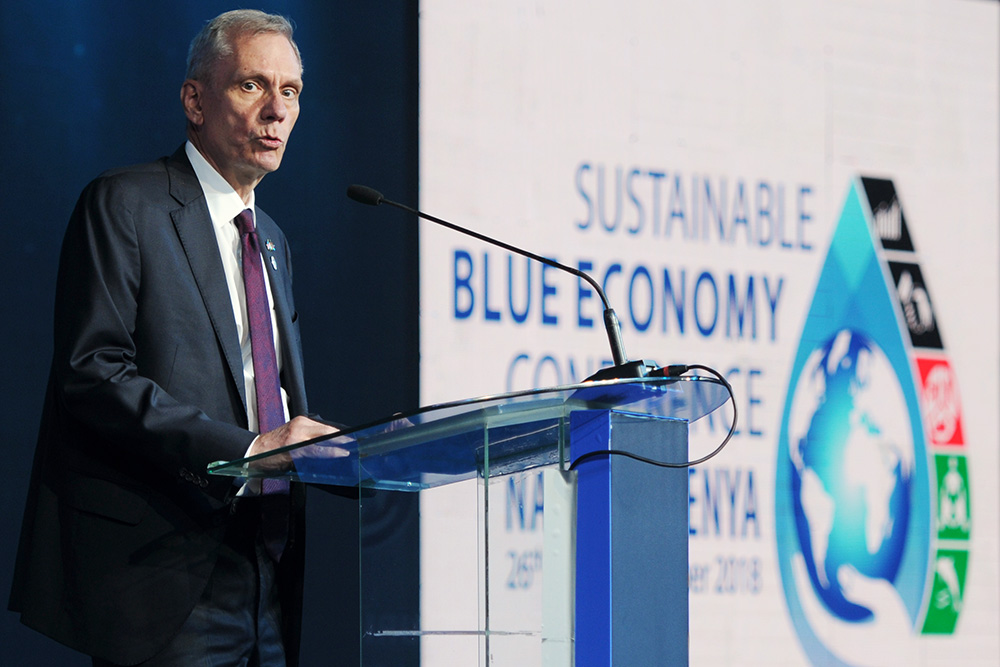
Robert Godec, Ambassador of the US to Kenya
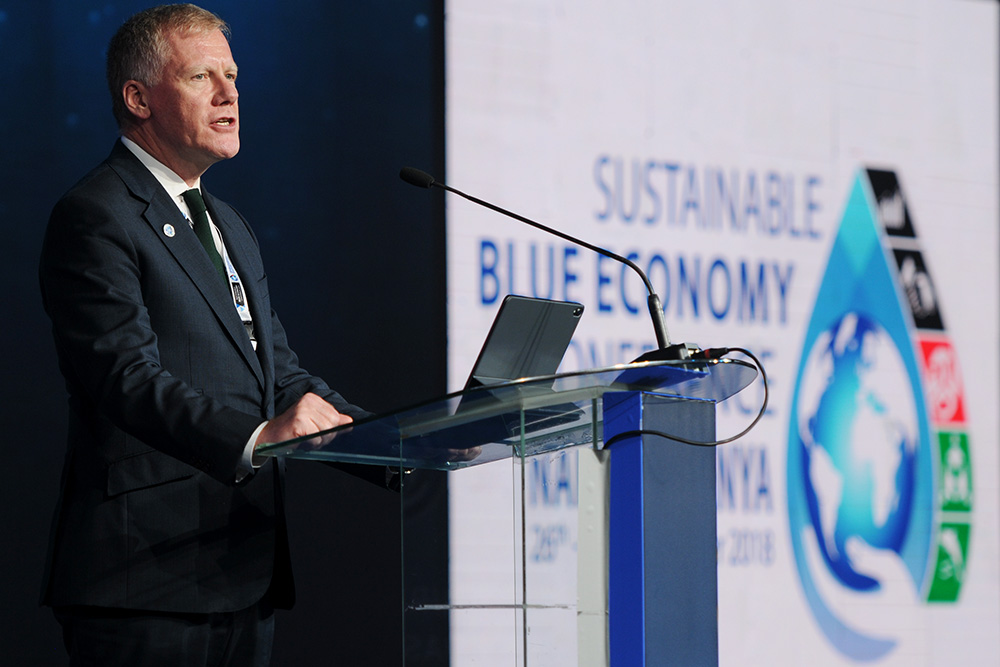
Michael Lodge, Secretary-General, International Seabed Authority
Harnessing Global Action to Tackle Illegal, Unreported and Unregulated (IUU) Fishing
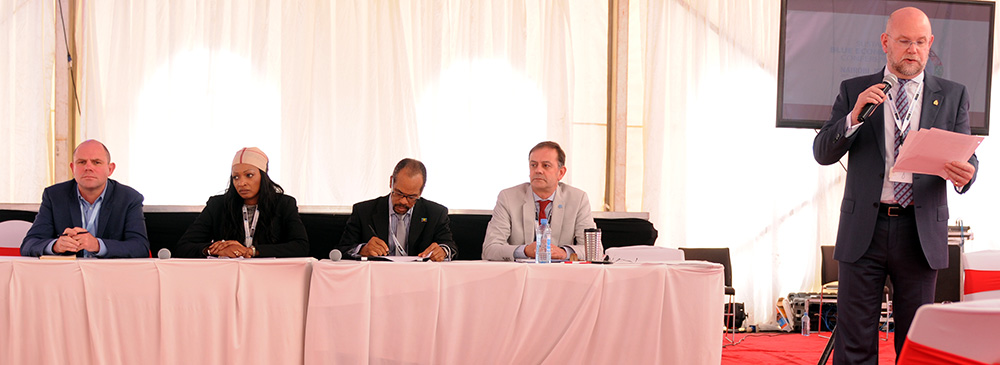
L-R: Duncan Copeland, Trygg Mat Tracking; Medina Thiam, Senegal National Agency for Maritime Affairs; Milton Haughton, Caribbean Regional Fisheries Mechanism; Manuel Barange, Director, Fisheries and Aquaculture Policy and Resources Division, UN Food and Agriculture Organization (FAO); and Darren Goetze, Director General, Conservation and Protection for Fisheries and Oceans Canada
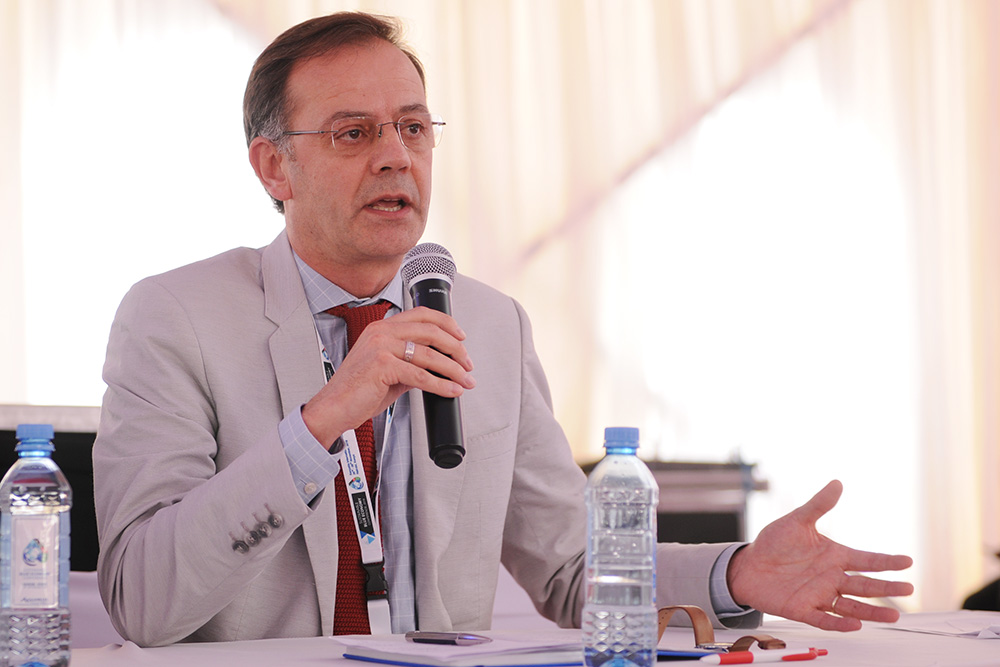
Manuel Barange, Director, Fisheries and Aquaculture Policy and Resources Division, FAO
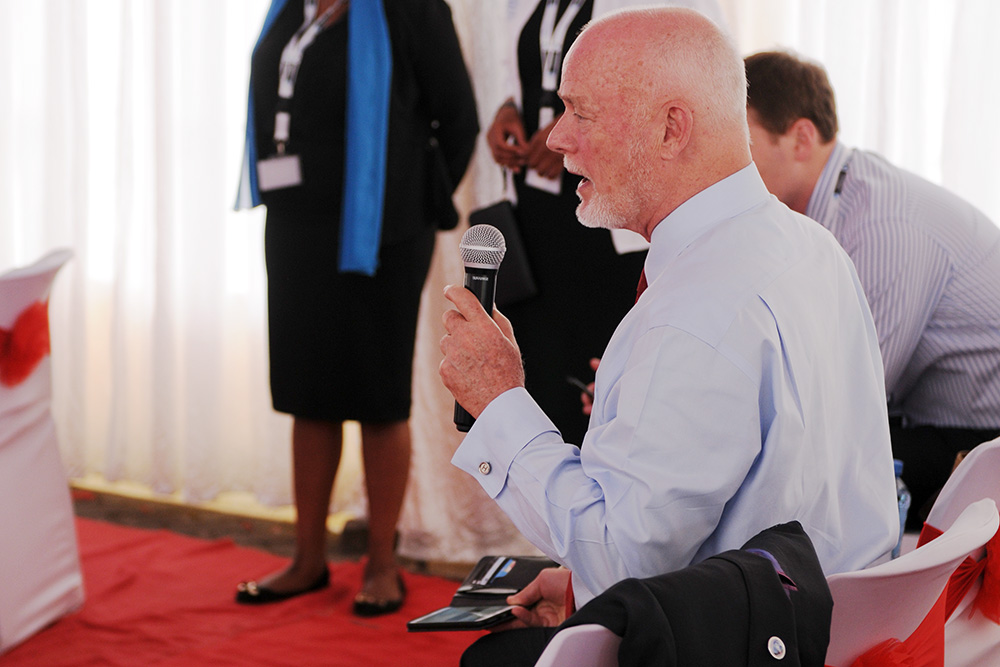
Peter Thomson, UN Special Envoy for the Ocean, asks a question to Manuel Barange.
Closing Ceremony
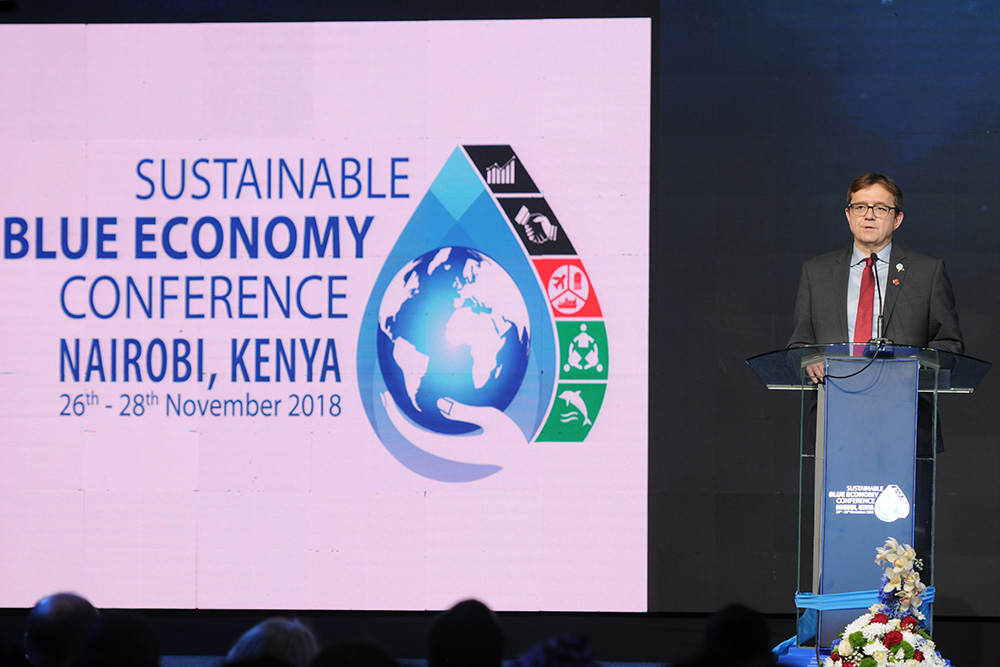
Jonathan Wilkinson, Minister of Fisheries, Oceans and the Canadian Coast Guard, Canada
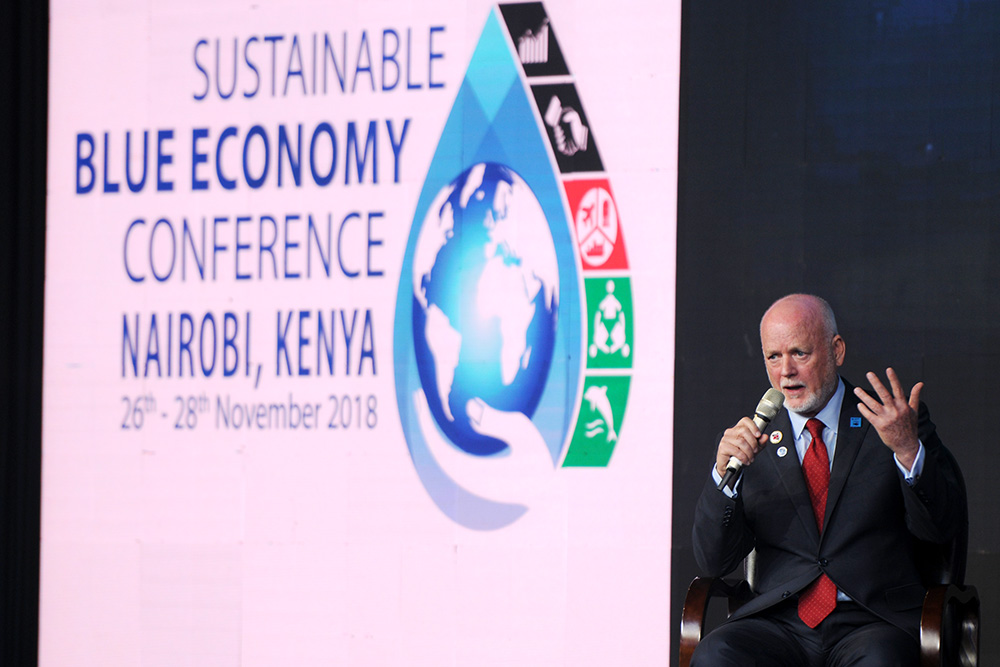
Peter Thomson, UN Special Envoy for the Ocean

President Uhuru Kenyatta, Kenya
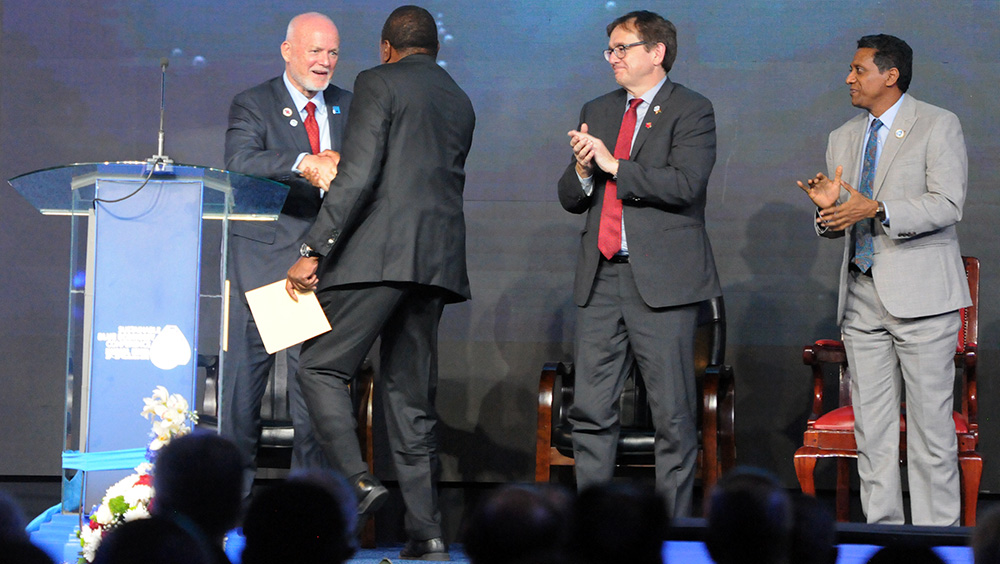
President Uhuru Kenyatta, Kenya, being congratulated at the conclusion of the Conference.
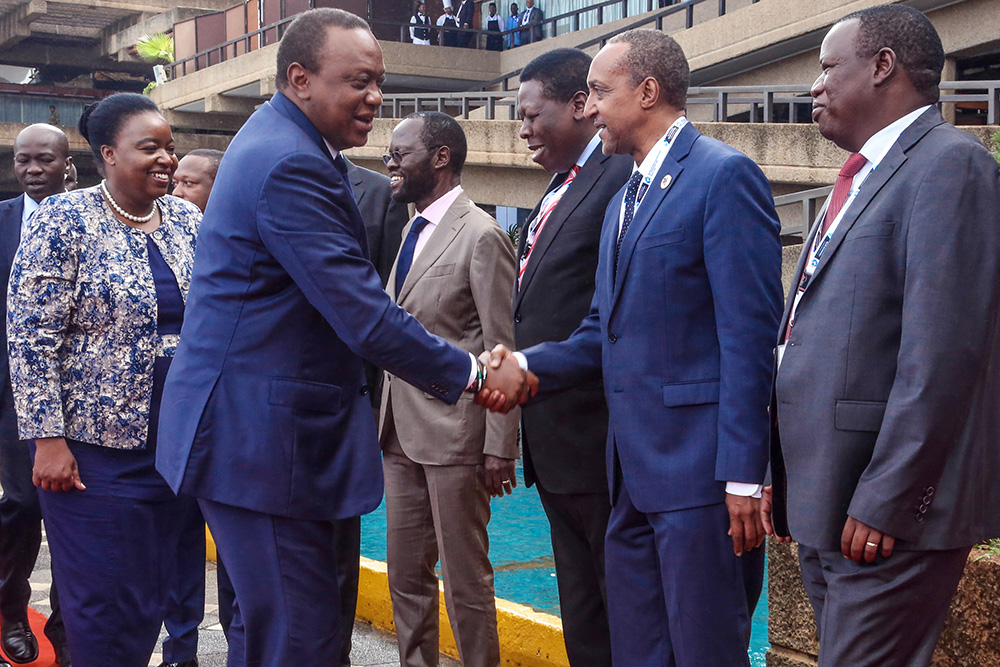
President Uhuru Kenyatta, Kenya, is welcomed by members of his government.
On Tuesday, the Sustainable Blue Economy Conference hosted signature thematic sessions on:
- sustainable energy, mineral resources and innovative industries;
- management and sustaining of marine life, conservation and sustainable economic activities; and
- ending hunger, securing food supplies and promoting good health and sustainable fisheries.
The Science and Research Symposium continued to explore the science behind a blue economy, while a Business and Private Sector Forum focused on:
- investing in the blue economy, including in tourism, maritime transport, aquaculture and renewable energy;
- innovative financing for the blue economy, such as “green bonds”; and
- how to build economic growth that is sustainable.
During the Governors and Mayors Convention, participants explored the connection between urban development of coastal zones and the impacts on the marine environment, and about ways to ensure development is sustainable and of benefit to all.
Many side events took place throughout the day, where participants shared their experiences and lessons on the different approaches to developing a blue economy at the local and global levels. In the morning, participants attended a side event on enhancing coastal marine ecosystem service mapping, assessments and valuation for sustainable blue economy policies and actions, in order to value the oceans adequately. Key messages included that the blue economy should aim to advance Sustainable Development Goal 14 (Conserve and sustainably use the oceans, seas and marine resources for sustainable development), which would help advance many other Goals, including those related to food security, economic development and decent jobs, poverty eradication, climate and gender equality.
In the afternoon, side events explored, among other issues, how to build the global momentum on marine/aquatic plastics litter.
A “blue fashion for blue growth” fashion show held in the evening, displayed ocean-sourced fabrics.
A local band welcomes President Uhuru Kenyatta, Kenya.
Governors and Mayors Convention
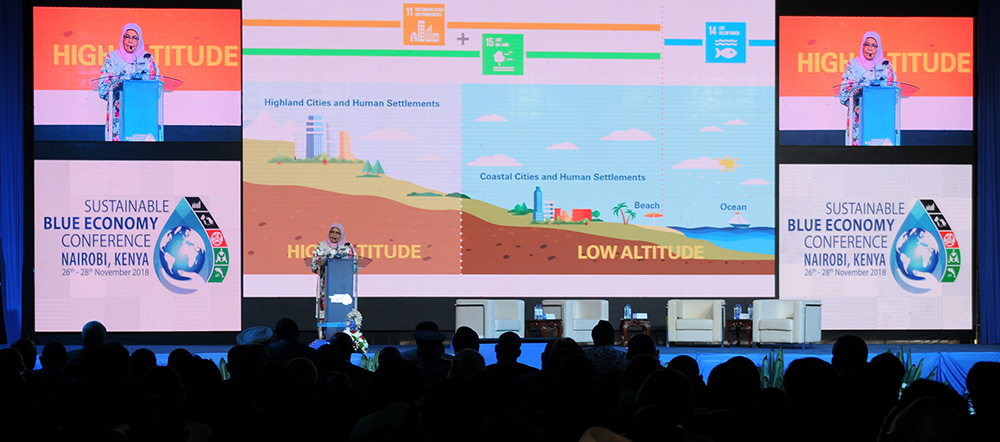
Maimunah Mohd Sharif, UN Under-Secretary-General, and Executive Director, UN Human Settlements Programme (UN-Habitat)

Participants listen to Uhuru Kenyatta’s address.
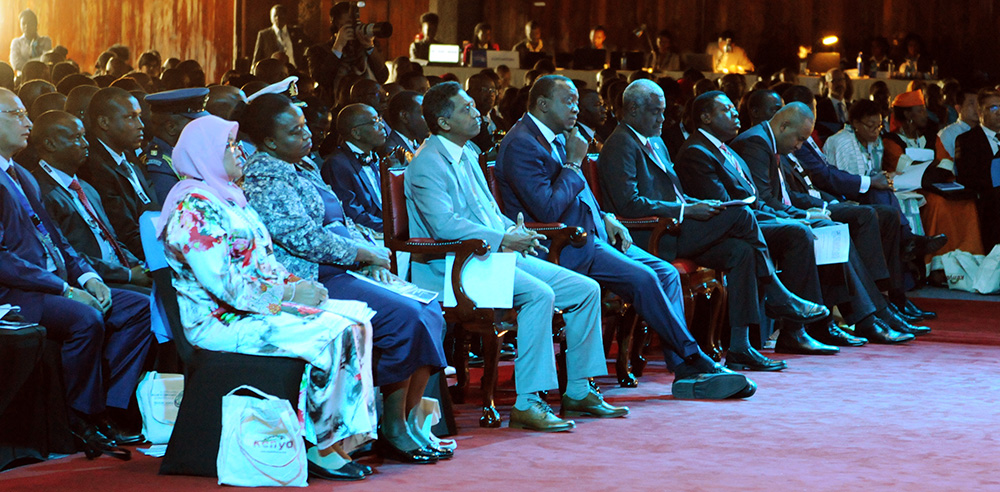
High-level dignitaries attending the Governors and Mayors Convention
Value the Oceans: Enhancing Coastal Marine Ecosystem Service Mapping, Assessments and Valuation for Sustainable Blue Economy Policies and Actions
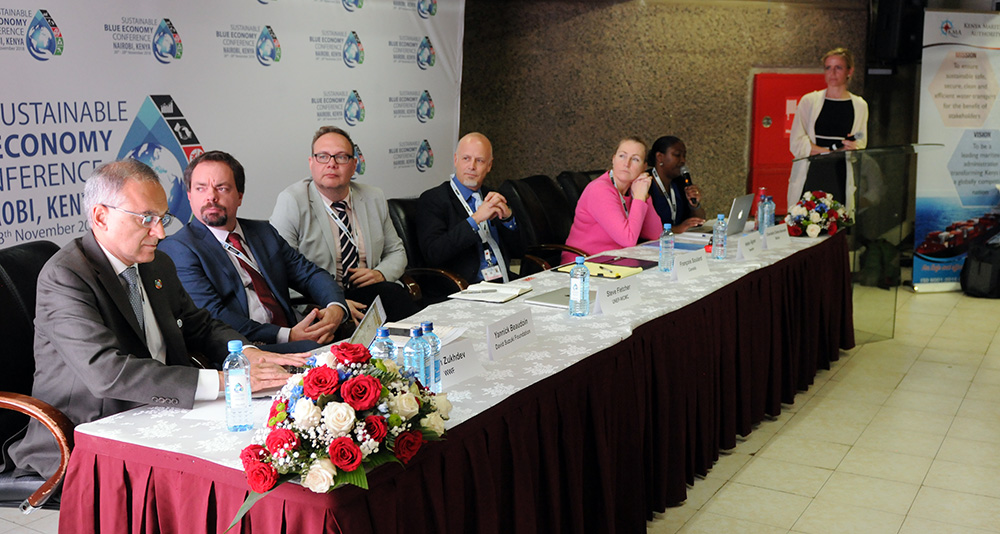
L-R: Pavan Sukhdev, President, World Wide Fund for Nature (WWF) International; Yannick Beaudoin, David Suzuki Foundation; Steve Fletcher, UN Environment Programme - World Conservation Monitoring Centre (UNEP-WCMC); François Soulard, Chief, Statistics Canada; Helen Agren, Ambassador for the Ocean, Sweden; Chantalle Clarke-Samuels, Coastal Zone Management Authority, Belize; and Moderator Lisa Svensson, Oceans Director, UNEP
Business and Private Sector Forum
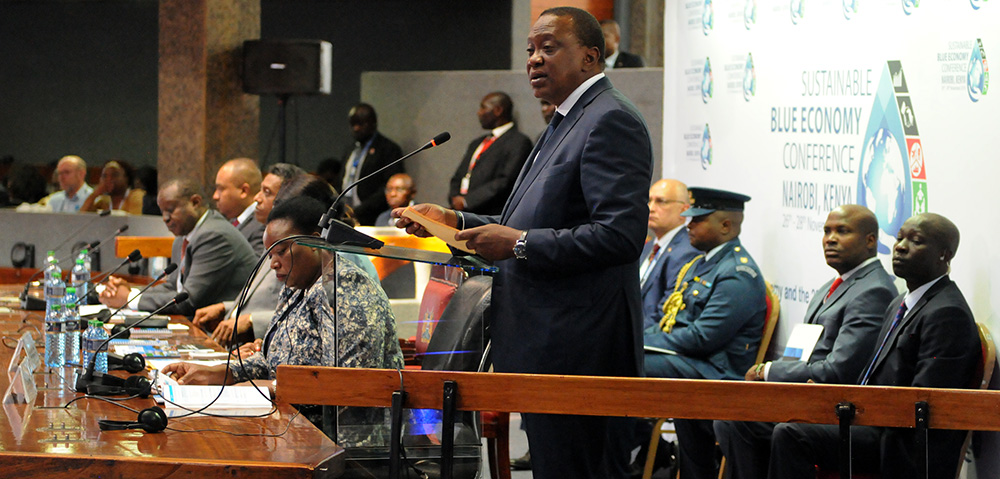
President Uhuru Kenyatta, Kenya
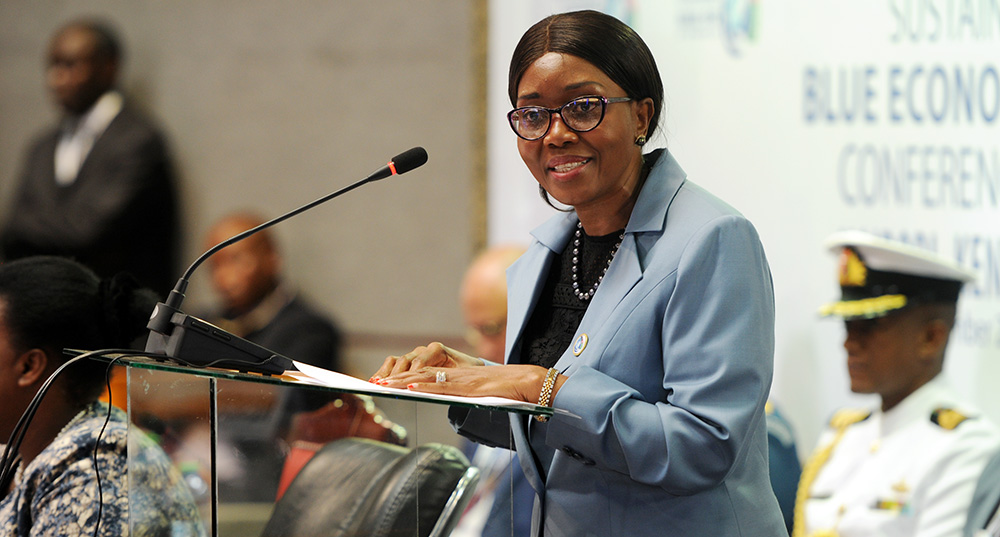
Saara Kuugongelwa-Amadhila, Prime Minister of Namibia
Ending Hunger, Securing Food Supplies and Promoting Good Health and Sustainable Fisheries
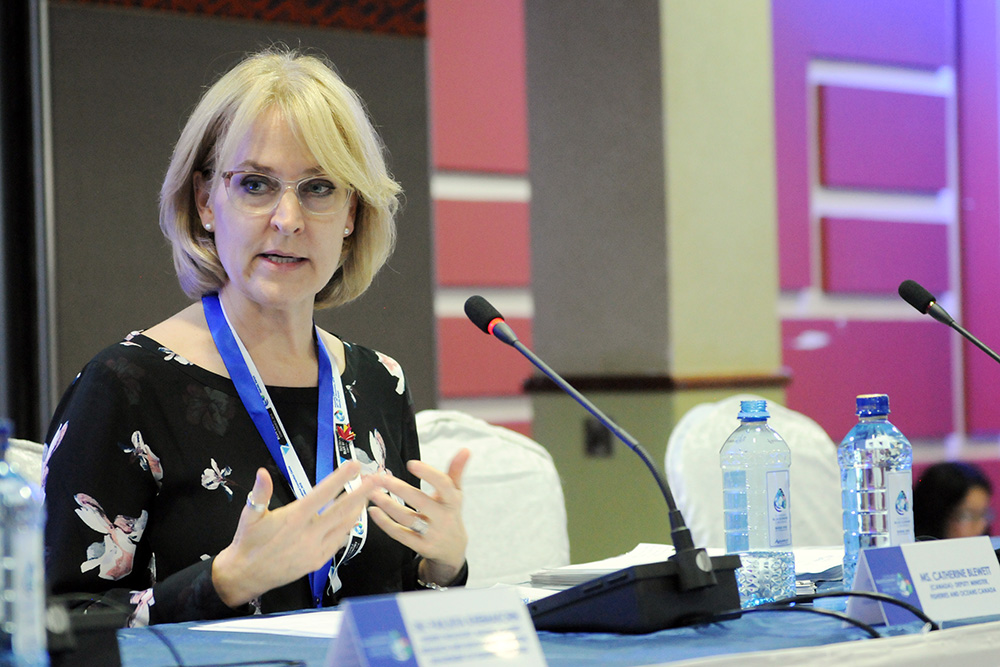
Catherine Blewett, Deputy Minister, Fisheries and Oceans, Canada
Blue Fashion for Blue Growth

Heads of state group photo
The Sustainable Blue Economy Conference 2018 opened on Monday 26 November in Nairobi, Kenya, as the first global meeting on how to ensure a sustainable blue economy. Over 16,000 participants registered for the event, and Monday saw over 70 countries’ heads of states and governments delivering their commitments to achieve the objectives of: harnessing the potential of oceans, seas, lakes and rivers to improve the lives of all; and leveraging the latest innovations, scientific advances and best practices to build prosperity while conserving the global waters for future generations.
The Leaders’ Commitments segment was interspersed with videos about the nine conference themes. On behalf of the host country, President Uhuru Kenyatta, Kenya, pledged that his country would play a leading role in: implementing proper policies and mechanisms to harness the blue economy; managing waste for the sake of food security and biodiversity; enforcing sustainable fishing; and ensuring security and safety in the high seas.
During opening remarks, Monica Juma, Cabinet Secretary, Kenyan Ministry of Foreign Affairs, said that oceans, seas, lakes and rivers held natural capital that could be used to accelerate economic growth, create jobs and fight against poverty while addressing environmental degradation. She highlighted the aim of the conference was to identify priorities, opportunities and challenges that would result in a Nairobi Statement of Intent, and invited commitments from different sectors to advance a blue economy.
Jonathan Wilkinson, Canadian Minister of Fisheries, Oceans and the Canadian Coast Guard, said that the conference would explore how to build a sustainable blue economy that left no one behind and that achieving a blue economy would require reliance on innovation, science and best practices, and a truly collaborative approach to enhance decision making.
Apart from the leaders’ segment, a dialogue took place on the pillars of a blue economy, these being: productivity through accelerated economic growth, job creation and poverty alleviation; and sustainability through addressing climate change, controlling pollution and managing waste, and sustaining marine life.
Many side events were held in parallel with the Leaders’ Commitments segment. Among others, the side event on the “Women of the Blue Economy: Lessons from the Field for better Equity and Participation” focused on the challenges for women in the fisheries sector through an interactive conversation among researchers, civil society members and policy makers on gender transformative processes and opportunities in the blue economy in Africa.
Leaders’ Commitment Segment
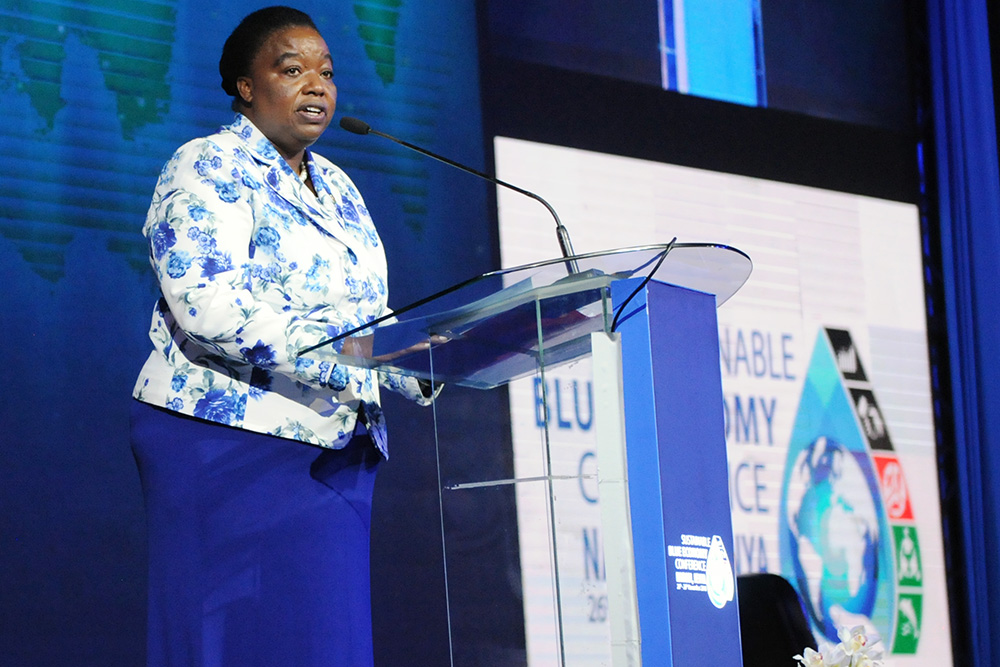
Monica Juma, Ministry of Foreign Affairs, Kenya
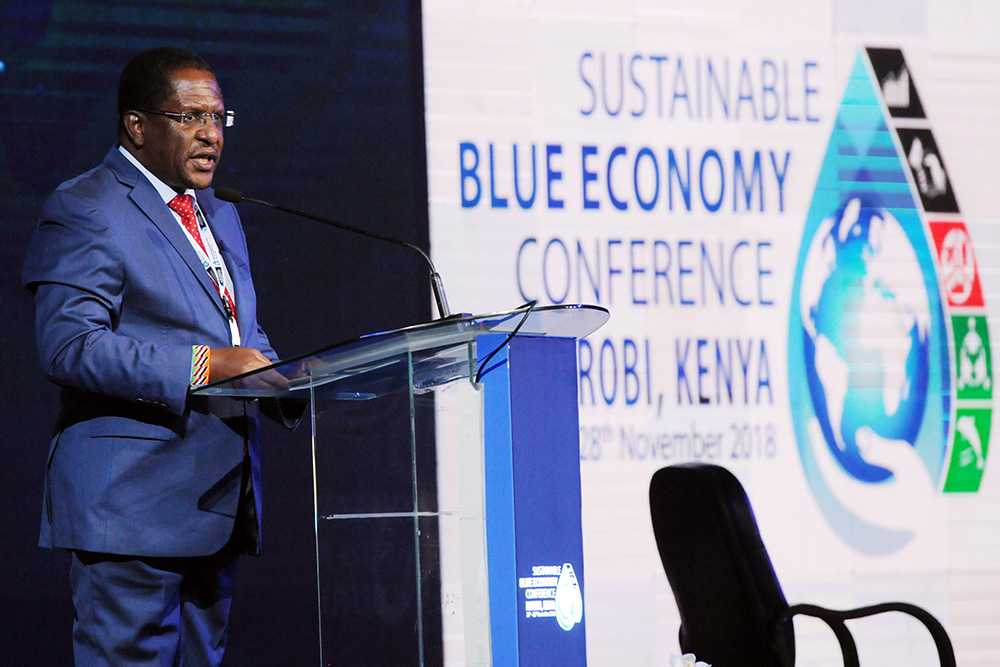
Keriako Tobiko, Ministry of Environment and Forestry, Kenya
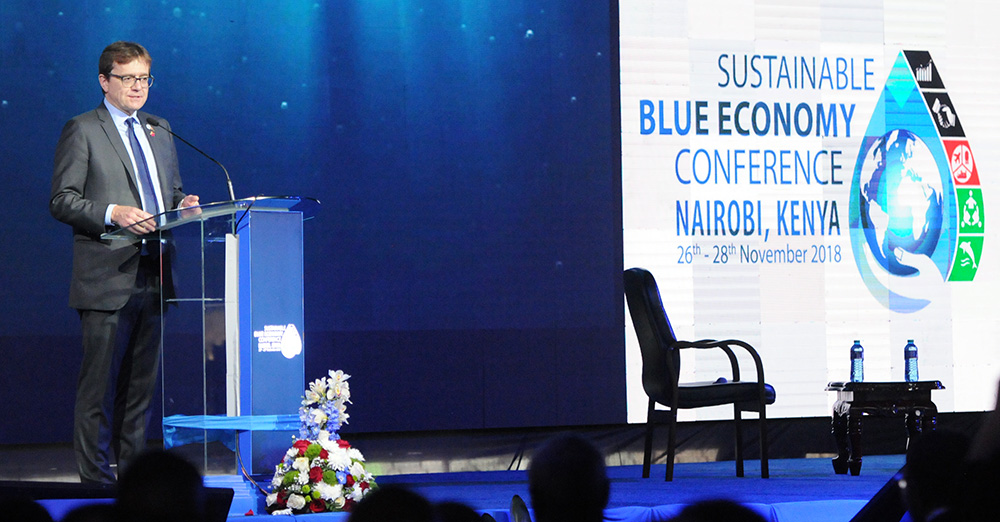
Jonathan Wilkinson, Minister of Fisheries, Oceans and the Canadian Coast Guard, Canada
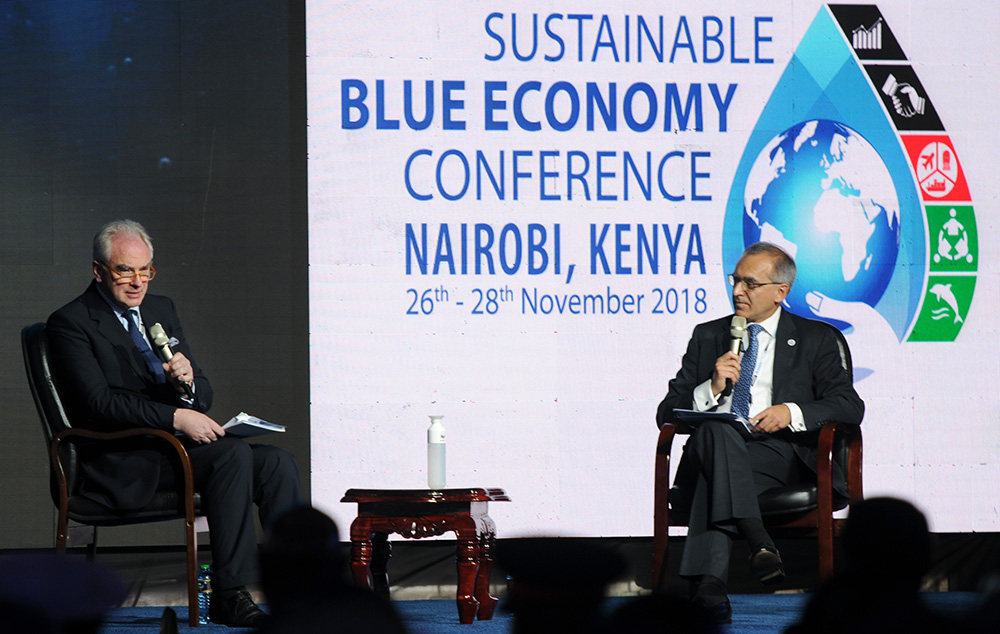
Justin Mundy, Senior Fellow and Special Envoy for Conflict and Natural
Resources, and Sustainable Ocean Initiatives, World Resources Institute (WRI), and Pavan Sukhdev, President, World Wide Fund for Nature (WWF International)
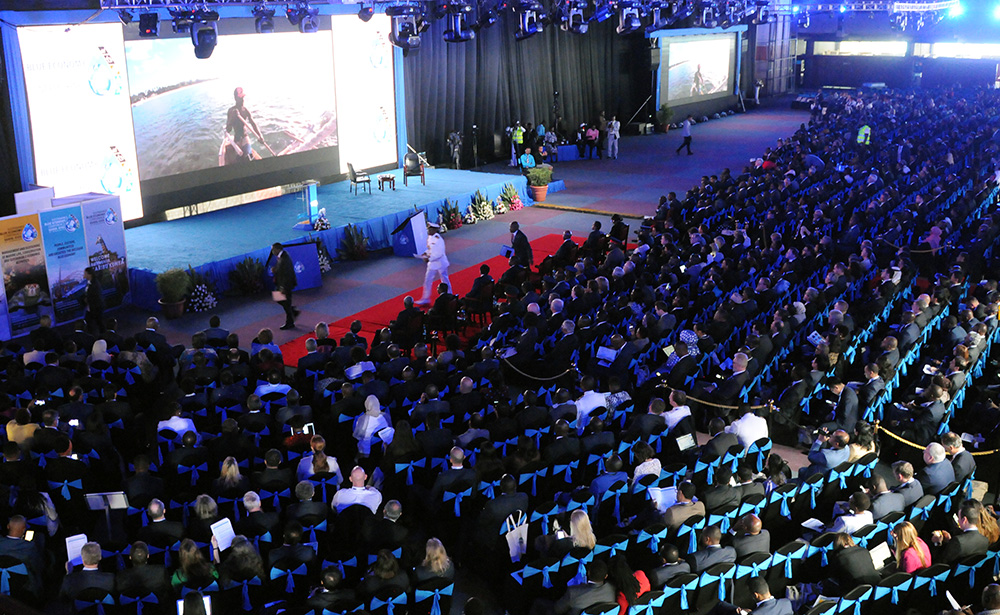
Participants watch a video on the blue economy
Women of the Blue Economy: Lessons from the Field for Better Equity and Participation
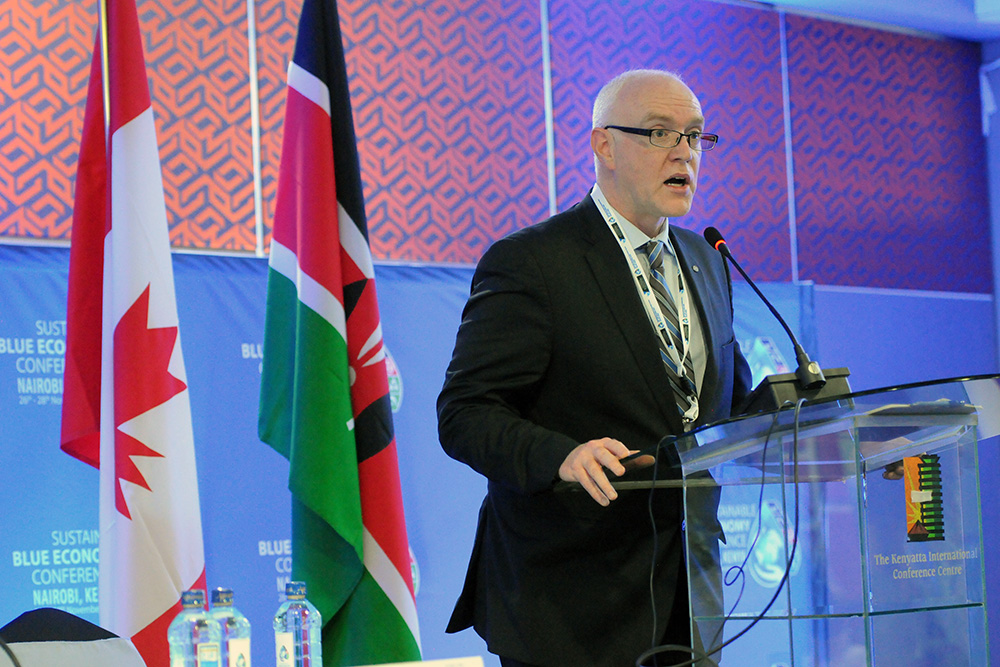
Chair Bruce Currie-Alder, International Development Research Centre (IDRC)
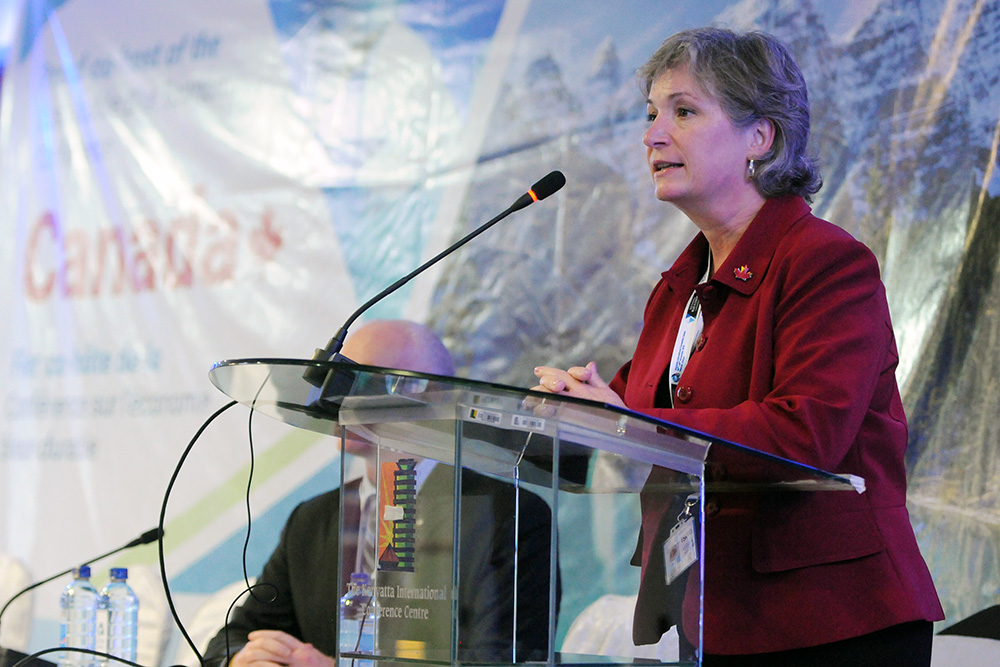
Lisa Stadelbauer, High Commissioner and Ambassador, Canada
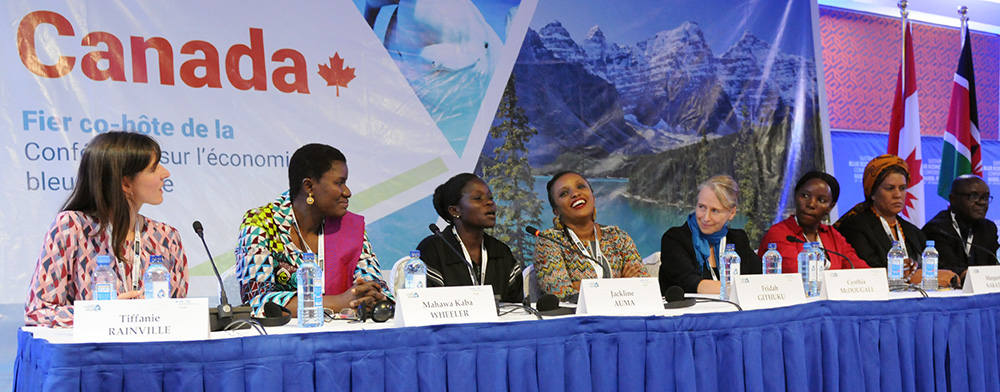
L-R: Tiffanie Rainville, Global Affairs Canada; Mahawa Kaba Wheeler, Director for Women, Gender and Development, African Union; Jackline Auma, Fisherwoman, Shakababo Lake Village, Tana River Delta, Tana County, Kenya; Fridah Githuku, Executive Director, Grassroots Organizations Operating Together in Sisterhood (GROOTS Kenya); Cynthia McDougall, WorldFish, Consultative Group on International Agricultural Research (CGIAR); Margaret Nakato, Director, Katosi Women Development Trust; Moenieba Isaacs, University of the Western Cape; and Kwasi Appeaning Addo, University of Ghana













